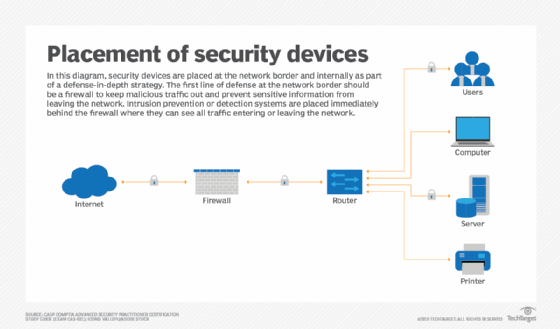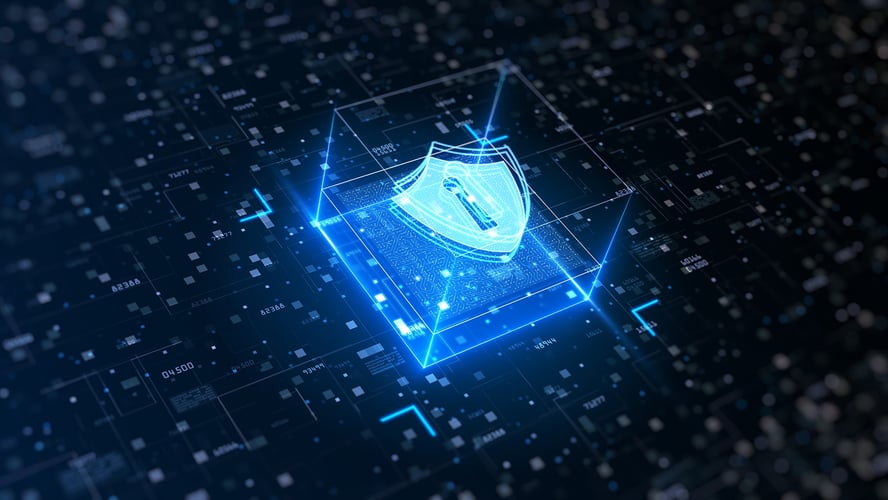Exactly How Information and Network Protection Shields Versus Arising Cyber Risks
In a period noted by the fast development of cyber risks, the significance of information and network safety and security has actually never ever been more noticable. Organizations are increasingly reliant on advanced safety steps such as file encryption, gain access to controls, and aggressive monitoring to secure their digital properties. As these threats come to be extra complicated, understanding the interaction between data protection and network defenses is crucial for alleviating risks. This conversation aims to explore the essential elements that fortify a company's cybersecurity posture and the approaches needed to stay in advance of potential susceptabilities. What remains to be seen, nonetheless, is exactly how these procedures will advance in the face of future challenges.
Understanding Cyber Dangers

The ever-evolving nature of innovation constantly presents new susceptabilities, making it vital for stakeholders to remain attentive. Individuals might unwittingly succumb to social engineering methods, where assaulters manipulate them into disclosing sensitive info. Organizations face unique difficulties, as cybercriminals often target them to make use of beneficial data or interrupt procedures.
Furthermore, the surge of the Net of Things (IoT) has increased the attack surface, as interconnected gadgets can offer as entry points for opponents. Recognizing the relevance of durable cybersecurity techniques is essential for alleviating these threats. By fostering an extensive understanding of cyber threats, organizations and individuals can carry out effective strategies to protect their digital possessions, making sure strength despite a significantly complex threat landscape.
Key Components of Information Safety
Making sure data protection calls for a complex strategy that incorporates numerous vital parts. One essential aspect is data encryption, which transforms delicate info into an unreadable format, available only to accredited customers with the proper decryption secrets. This acts as an essential line of protection against unauthorized access.
An additional crucial element is access control, which manages that can see or manipulate information. By carrying out strict customer verification protocols and role-based access controls, companies can reduce the risk of expert risks and information violations.

Additionally, data concealing methods can be utilized to safeguard sensitive information while still enabling its use in non-production settings, such as screening and growth. fft perimeter intrusion solutions.
Network Protection Methods
Carrying out robust network safety and security techniques is important for protecting an organization's electronic facilities. These techniques involve a multi-layered strategy that consists of both software and hardware remedies made to secure the integrity, confidentiality, and availability of data.
One critical element of network safety is the implementation of firewalls, which function as a barrier in between trusted interior networks and untrusted exterior networks. Firewall programs can be hardware-based, software-based, or a mix of both, and they help filter inbound and outbound traffic based upon predefined protection regulations.
Furthermore, intrusion discovery and prevention systems (IDPS) play a crucial role in monitoring network web traffic for suspicious tasks. These systems can alert administrators to possible breaches and do something about it to reduce threats in real-time. On a regular basis covering and updating software program is also vital, as vulnerabilities can be made use of by cybercriminals.
In addition, executing Virtual Private Networks (VPNs) makes sure secure remote gain access to, securing information transmitted over public networks. Finally, segmenting networks can lower the attack surface and consist of possible breaches, limiting their effect on the total infrastructure. By read this taking on these strategies, organizations can efficiently strengthen their networks versus arising cyber hazards.
Best Practices for Organizations
Establishing best techniques for companies is vital in preserving a solid safety and security position. A comprehensive approach to information and network safety begins with normal threat evaluations to determine vulnerabilities and possible dangers.
Additionally, continual worker training and understanding programs are important. Staff members should be enlightened on acknowledging phishing attempts, social engineering methods, and the value of adhering to security procedures. Regular updates and spot management for software program and systems are likewise essential to secure against understood vulnerabilities.
Organizations need to evaluate and develop incident action plans to make sure preparedness for prospective violations. This includes developing clear communication channels and duties during a protection event. Data file encryption need to be employed both at rest and in transportation to my latest blog post guard sensitive info.
Last but not least, conducting periodic audits and compliance checks will certainly aid guarantee adherence to well-known plans and relevant policies - fft perimeter intrusion solutions. By complying with these ideal techniques, organizations can substantially boost their strength versus arising cyber threats and safeguard their important properties
Future Trends in Cybersecurity
As companies browse an increasingly complex digital landscape, the future of cybersecurity is poised to develop substantially, driven by arising modern technologies and changing threat paradigms. One prominent trend is the integration of synthetic intelligence (AI) and artificial intelligence (ML) into safety and security frameworks, permitting real-time threat detection and response automation. These modern technologies can analyze vast quantities of information to determine abnormalities and possible violations much more efficiently than traditional approaches.
An additional important pattern is the increase of zero-trust architecture, which calls for continual confirmation of customer identifications and gadget safety and security, despite their area. This technique decreases the danger of insider threats and enhances defense against outside attacks.
Furthermore, the raising fostering of cloud services demands durable cloud safety methods that resolve one-of-a-kind susceptabilities connected with cloud settings. As remote job becomes an irreversible fixture, safeguarding endpoints will additionally end up being paramount, causing an elevated emphasis on endpoint detection and action (EDR) solutions.
Last but not least, governing conformity will remain to shape cybersecurity methods, pressing organizations to take on more rigid data security actions. Embracing these fads will be vital for organizations to strengthen their defenses and browse the developing landscape of cyber dangers effectively.
Conclusion
In conclusion, the execution of durable data and network security measures is crucial for companies to secure against arising cyber dangers. By using encryption, accessibility control, and reliable network safety and security techniques, companies can substantially decrease informative post vulnerabilities and shield sensitive information.
In a period marked by the quick development of cyber threats, the relevance of information and network security has actually never been extra obvious. As these risks come to be a lot more complex, comprehending the interplay in between data security and network defenses is necessary for reducing risks. Cyber dangers include a broad array of malicious tasks aimed at compromising the privacy, integrity, and accessibility of data and networks. A comprehensive technique to information and network security begins with routine threat analyses to recognize susceptabilities and possible risks.In verdict, the implementation of robust data and network security actions is essential for companies to safeguard against arising cyber hazards.
Comments on “Why FFT Perimeter Intrusion Solutions Are Essential for Effective Surveillance”